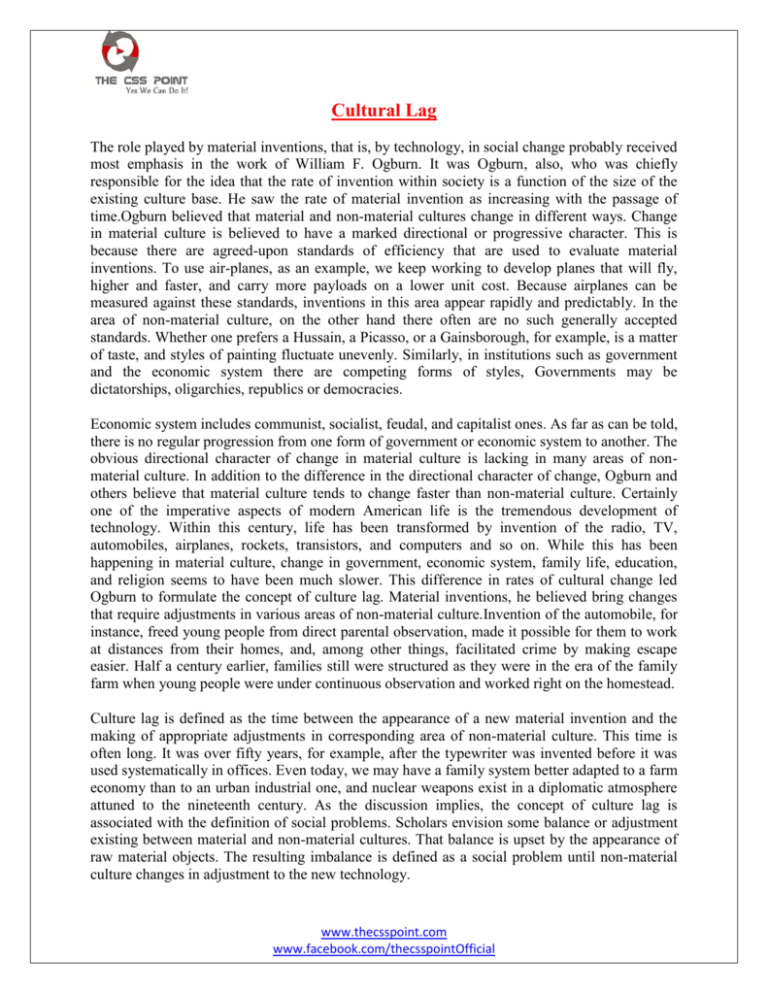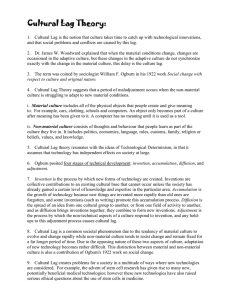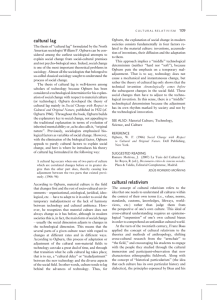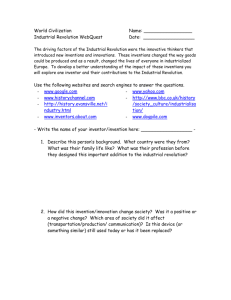Cultural Lag - CatchyWorld
advertisement

Cultural Lag The role played by material inventions, that is, by technology, in social change probably received most emphasis in the work of William F. Ogburn. It was Ogburn, also, who was chiefly responsible for the idea that the rate of invention within society is a function of the size of the existing culture base. He saw the rate of material invention as increasing with the passage of time.Ogburn believed that material and non-material cultures change in different ways. Change in material culture is believed to have a marked directional or progressive character. This is because there are agreed-upon standards of efficiency that are used to evaluate material inventions. To use air-planes, as an example, we keep working to develop planes that will fly, higher and faster, and carry more payloads on a lower unit cost. Because airplanes can be measured against these standards, inventions in this area appear rapidly and predictably. In the area of non-material culture, on the other hand there often are no such generally accepted standards. Whether one prefers a Hussain, a Picasso, or a Gainsborough, for example, is a matter of taste, and styles of painting fluctuate unevenly. Similarly, in institutions such as government and the economic system there are competing forms of styles, Governments may be dictatorships, oligarchies, republics or democracies. Economic system includes communist, socialist, feudal, and capitalist ones. As far as can be told, there is no regular progression from one form of government or economic system to another. The obvious directional character of change in material culture is lacking in many areas of nonmaterial culture. In addition to the difference in the directional character of change, Ogburn and others believe that material culture tends to change faster than non-material culture. Certainly one of the imperative aspects of modern American life is the tremendous development of technology. Within this century, life has been transformed by invention of the radio, TV, automobiles, airplanes, rockets, transistors, and computers and so on. While this has been happening in material culture, change in government, economic system, family life, education, and religion seems to have been much slower. This difference in rates of cultural change led Ogburn to formulate the concept of culture lag. Material inventions, he believed bring changes that require adjustments in various areas of non-material culture.Invention of the automobile, for instance, freed young people from direct parental observation, made it possible for them to work at distances from their homes, and, among other things, facilitated crime by making escape easier. Half a century earlier, families still were structured as they were in the era of the family farm when young people were under continuous observation and worked right on the homestead. Culture lag is defined as the time between the appearance of a new material invention and the making of appropriate adjustments in corresponding area of non-material culture. This time is often long. It was over fifty years, for example, after the typewriter was invented before it was used systematically in offices. Even today, we may have a family system better adapted to a farm economy than to an urban industrial one, and nuclear weapons exist in a diplomatic atmosphere attuned to the nineteenth century. As the discussion implies, the concept of culture lag is associated with the definition of social problems. Scholars envision some balance or adjustment existing between material and non-material cultures. That balance is upset by the appearance of raw material objects. The resulting imbalance is defined as a social problem until non-material culture changes in adjustment to the new technology. www.thecsspoint.com www.facebook.com/thecsspointOfficial












